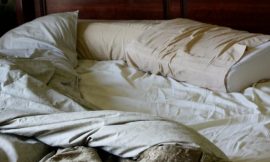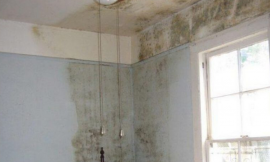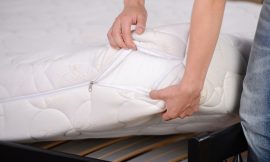
Did you know that the average person spends about one-third of their life in bed? That’s a lot of time shared with dust mites, pet dander, and allergens! Creating a healthy sleep environment is crucial if you want to wake up feeling refreshed and energized. In this comprehensive guide, we’ll explore practical steps to reduce dust and allergens in your bedroom, helping you breathe easier and sleep better. Say goodbye to those allergy symptoms and hello to a cleaner, healthier space! Let's dive into some effective techniques that will transform your bedroom into a sanctuary!
Understand Common Bedroom Allergens
When it comes to our bedrooms, many of us might not realize that they can harbor a variety of allergens. Common culprits include dust mites, pollen, mold, and pet dander. Dust mites thrive in warm, humid environments, typically found in bedding and upholstered furniture. Pollen can enter your home through open windows or on clothing, while mold loves damp areas like bathrooms or poorly ventilated spaces. If you share your home with pets, dander can be another significant source of allergens.
These allergens can negatively impact your sleep quality and overall health. They can trigger allergy symptoms such as sneezing, nasal congestion, and itchy eyes, making it difficult to fall asleep or stay asleep throughout the night. Identifying your specific allergens is crucial; understanding what affects you allows you to tailor your cleaning strategy effectively.
Regular Cleaning Routines
Establishing a regular cleaning routine is one of the best defenses against bedroom allergens. Start with best practices like dusting surfaces with a damp cloth to trap dust instead of spreading it around. When vacuuming, a vacuum with a HEPA filter can trap allergens effectively, preventing them from being released back into the air.
Cleaning frequency is also essential. Aim to dust high-traffic areas at least once a week. Vacuuming should ideally be done twice a week, especially if you have pets. Don’t forget to wash your bedding weekly in hot water to eliminate dust mites. Curtains and other textiles should be washed monthly to keep allergens at bay.
Choosing Allergen-Reducing Products
When selecting items for your bedroom, consider hypoallergenic bedding and mattress covers. These products are designed to reduce the accumulation of allergens, helping you breathe easier at night. Additionally, using high-quality air filters and purifiers can significantly improve your indoor air quality by capturing harmful particles.
Be mindful of the cleaning products you choose as well. Look for those that are effective yet safe for allergy sufferers. Products that are free from harsh chemicals can minimize irritation and help create a healthier sleeping environment.
Optimize Your Bedroom Environment
Maintaining ideal humidity levels is crucial for discouraging mold and dust mites. Aim for a humidity level of around 30-50%. You can use dehumidifiers or air conditioners to help achieve this.
Decluttering your bedroom can also minimize dust accumulation. Organize your belongings to reduce dust collection spots and make cleaning easier. Interestingly, while indoor plants can improve air quality, be cautious with those that may produce allergens; some plants can emit pollen.
Smart Bedroom Features
Incorporating smart technology into your bedroom can help manage allergen levels more effectively. Using HEPA filters or smart thermostats allows you to maintain optimal air quality with minimal effort. Furthermore, humidity control devices can assist in creating a less hospitable environment for allergens.
Implementing a regular maintenance schedule for your bedroom is another smart strategy. Routine checks on air filters and cleaning schedules ensure you keep allergens in check and can improve your overall sleep experience.
Conclusion
Reducing dust and allergens in your bedroom is not just about cleanliness; it's about creating a sanctuary where you can rejuvenate and restore health every night. By understanding common allergens, adopting regular cleaning habits, choosing the right products, optimizing your environment, and leveraging smart technology, you’ll be well on your way to a sleep-friendly space. Take charge of your sleep environment today—get started on these tips to breathe easier and sleep better. Your body will thank you!





